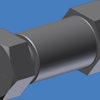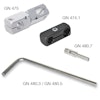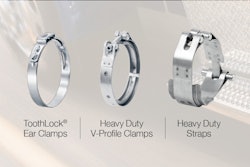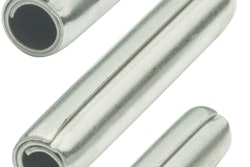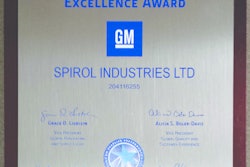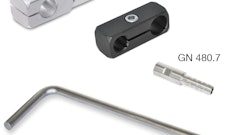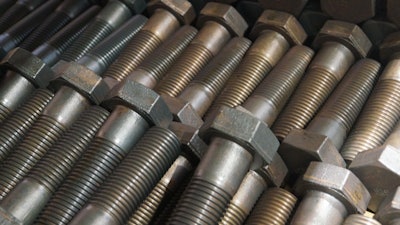
Ever since the invention of the internal combustion engine, it’s the heavy-duty trucks and off-highway vehicles that have perhaps been most important to the nation’s growth. Such vehicles have built, harvested and supplied the nation since the dawn of motorization. For example, 70% of all freight tonnage in the U.S. is delivered by truck1.
However, with the advent of Phase 1 and Phase 2 emissions laws, the design and manufacture of these vehicles had to adapt to meet these standards. Is there a way to balance these environmental concerns while still retaining the attributes that make these vehicles so vital?
Steve Adkins, North American Director of Engineering at Optimas—a global supplier of fasteners and supply chain solutions—explores how component innovations and a knowledgeable approach can balance efficiency with application requirements.
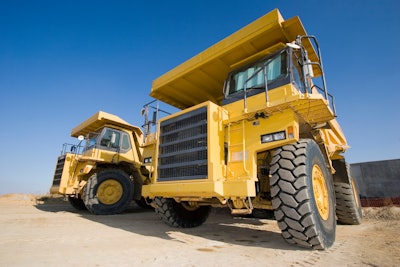 By working together with fastener manufacturers, an OEM can select components capable of offering design improvements, such as corrosion resistance, for the demanding applications in which their vehicles operate.Optimas
By working together with fastener manufacturers, an OEM can select components capable of offering design improvements, such as corrosion resistance, for the demanding applications in which their vehicles operate.Optimas
Now manufacturers are required to walk a tightrope: reducing weight to improve fuel efficiency, while simultaneously improving the performance benchmark. Heavy-duty vehicles have hard working lives, so no sacrifice on reliability can be made by an OEM as their vehicles would become unprofitable to operate for end users. To select components to achieve this, involving an integrated fastener technology and application expert such as Optimas is important.
Selecting an appropriate fastener for an application must involve the concerns of the manufacturer. Therefore, thorough component analysis is required to meet specific customer application challenges. While this is a continuous process as more innovative materials and manufacturing techniques are explored, a highly optimized fastener can become standard within a manufacturing process for many years. This standardization will offer cost and efficiency benefits throughout the component’s usage to a manufacturer, optimizing the Bill of Materials (BoM) and mitigating against the perceived pains of implementation.
Optimas has over 60 years of heritage as a supplier of high quality, engineered fasteners; for many of these years it has been heavily involved with the heavy-duty vehicle industry. It has worked closely with the design, engineering and procurement teams for a wide range of major heavy-duty vehicle manufacturers and tier 1 suppliers – which allows Optimas engineers to gain real insight into the industry and its demands. Regular implementation meetings and responsiveness ensures that a manufacturer’s specific fastener requirements can be met quickly.
The benefits of this approach can be significant. One manufacturer of construction vehicles was able to utilize a new, lighter fastener that offered the consistency and corrosion resistance the application demanded. By further optimizing the production process to incorporate this fastener, the manufacturer also managed to generate a 30% reduction in assembly line process time.  Optimas worked closely with the design team at a heavy-duty truck OEM to originate a single metal lightweight locknut that replaced a variety of heavy nylon equivalents on the chassis, reducing the overall weight of fasteners on the truck by 10%.Optimas
Optimas worked closely with the design team at a heavy-duty truck OEM to originate a single metal lightweight locknut that replaced a variety of heavy nylon equivalents on the chassis, reducing the overall weight of fasteners on the truck by 10%.Optimas
Another example comes from the heavy truck industry, where an efficiency war in the market is taking place to decrease cost over every mile. Again, weight savings to boost efficiency was the primary concern, but improving reliability was also a focus for the customer. Optimas worked closely with the manufacturer’s design team to originate a single metal lightweight locknut that replaced a variety of heavy nylon equivalents on the truck chassis. The component was corrosion resistant, held greater torque tensions and reduced the overall weight of fasteners on the truck by 10%. Elimination of the nylon parts also increased inventory space and expedited production.
A consistent integrated fastener approach, defined and implemented early, can deliver more than just a competent component that improves environmental characteristics. In both examples, weight was reduced to provide greater fuel efficiency and environmental credentials – while preserving the expected performance of the vehicle. Furthermore, associated efficiency gains and the reduction of soft costs provided an incentive to implement the new components, benefits that will be compounded throughout the product lifecycle.
The defining factor is fastener knowledge, which with an integrated fastener specialist, can be implemented with increased speed and minimal disturbance to operations. Businesses such as Optimas can therefore deliver the balance that heavy-duty vehicle OEMs require between performance and efficiency, allowing these vehicles to keep pace with ever tighter emissions standards within the industry.

